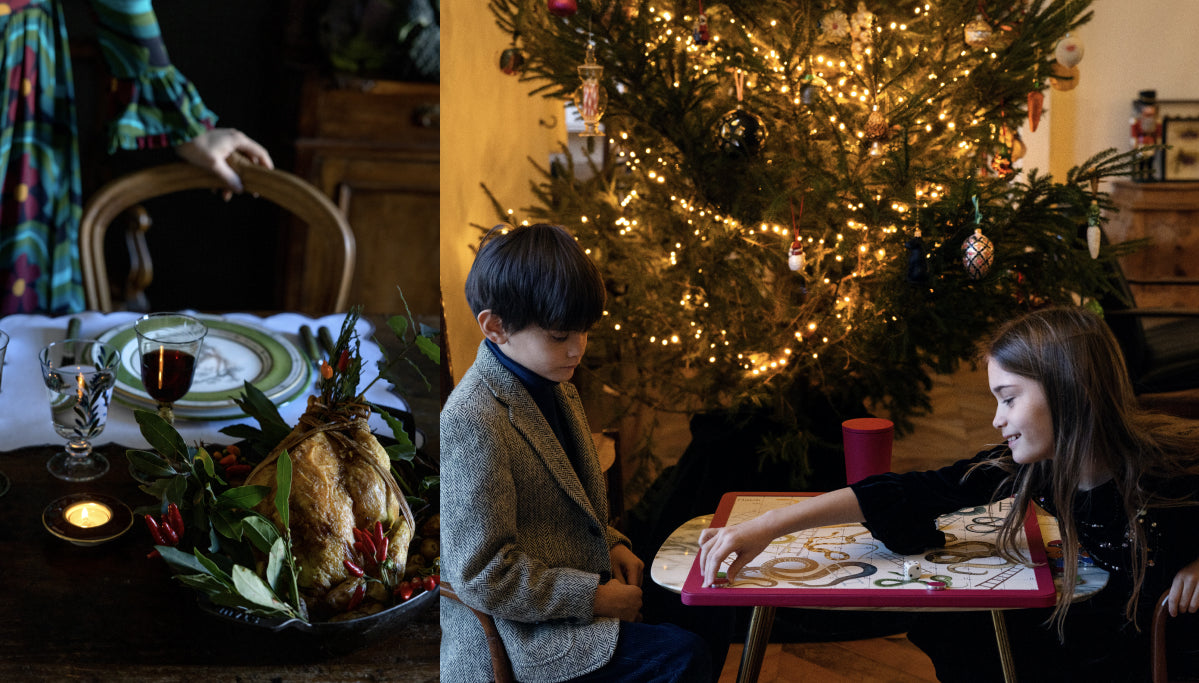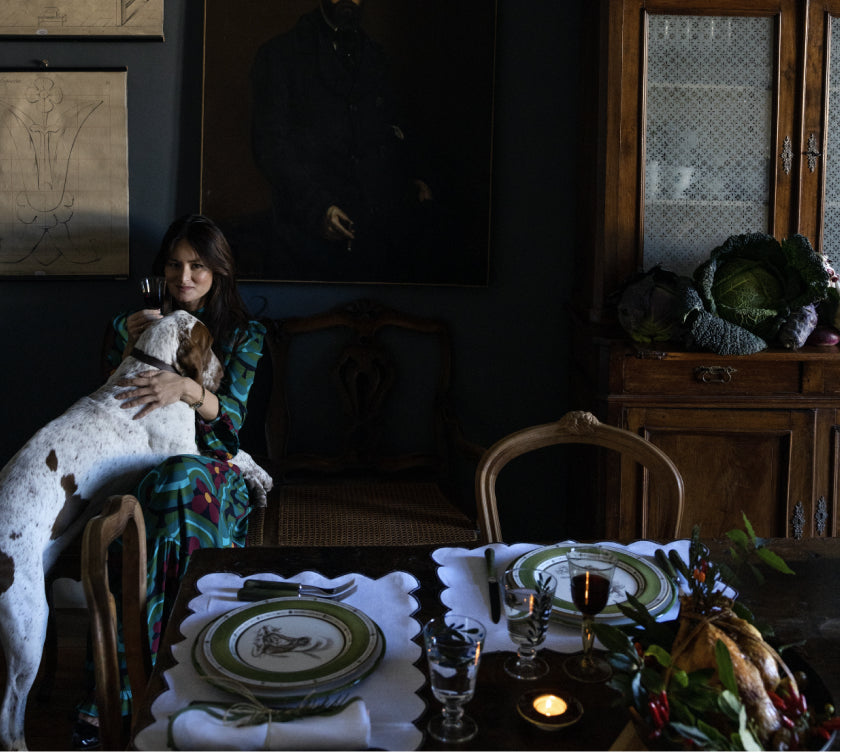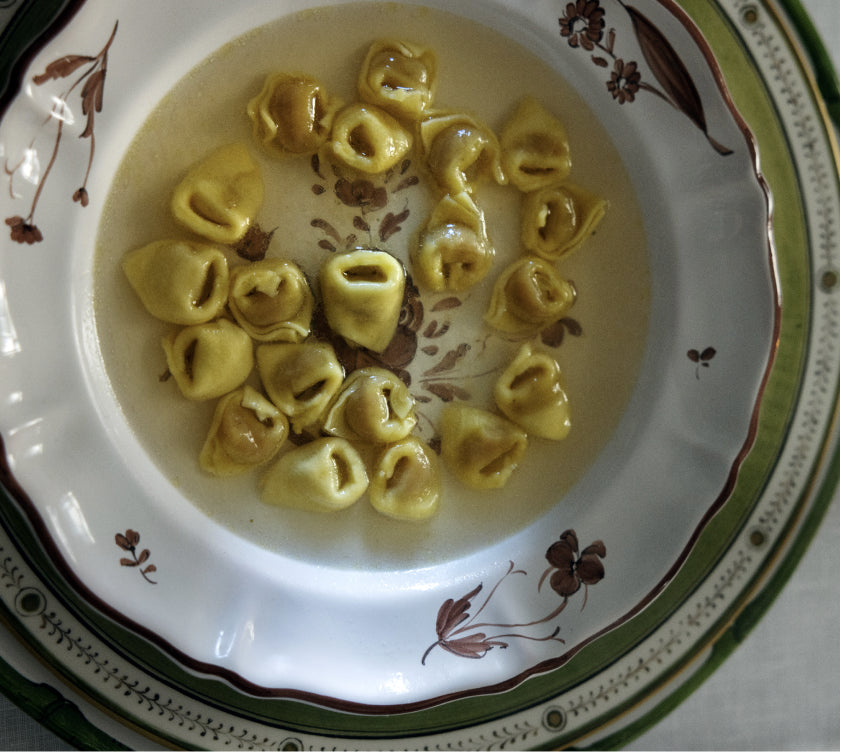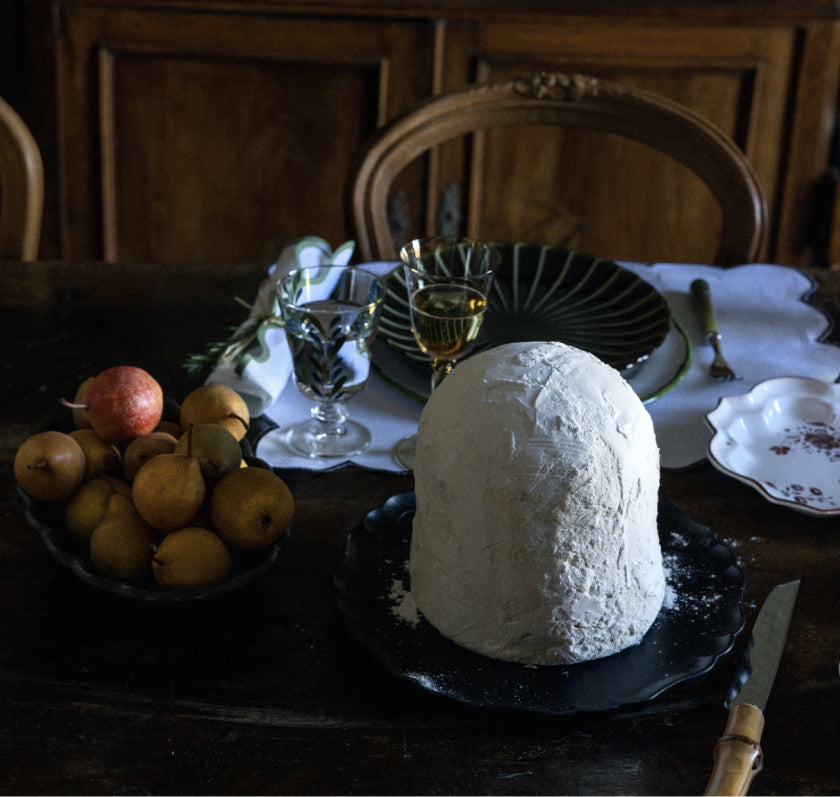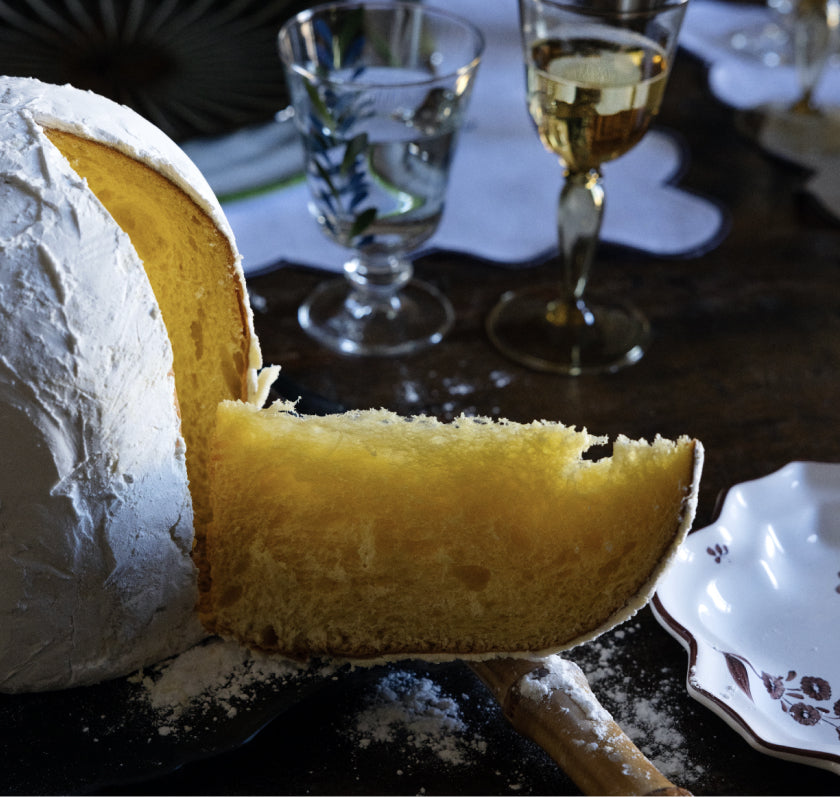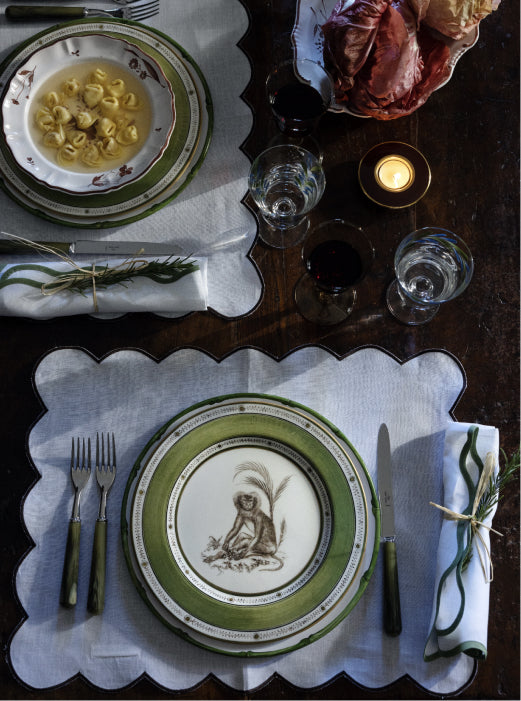
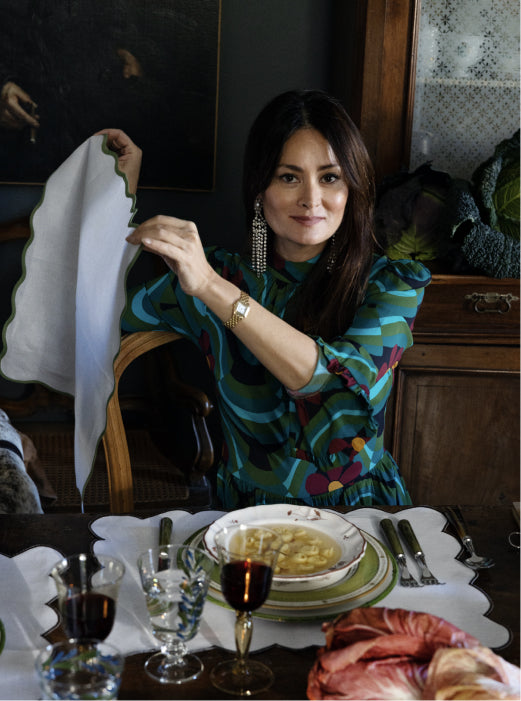
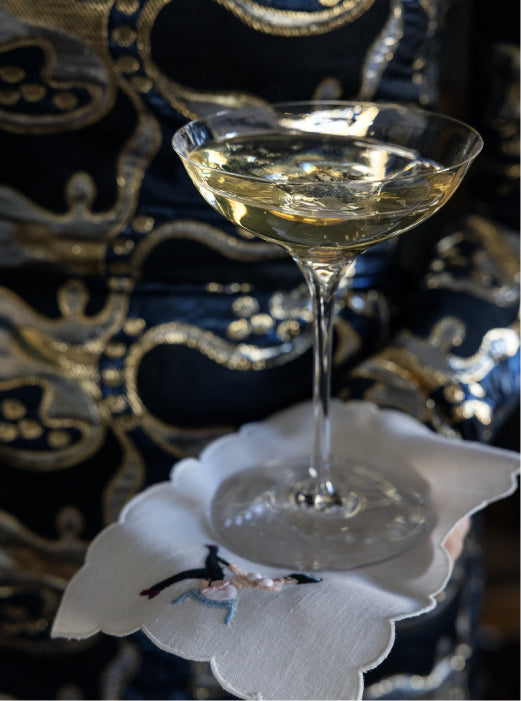
Mimi Thorisson’s Guide to Holidays
Words by Ellie PithersChristmas wasn’t always the most wonderful time of the year for Mimi Thorisson. The Chinese-French food writer and cook grew up an only child in Hong Kong, and while she fondly recalls festive blow-outs every few years with her maternal family in the south of France, her abiding memory of Christmas is one of pronounced loneliness.
Things changed when, in her late twenties, she met and fell in love with her now-husband, the Icelandic photographer Oddur Thorisson, in Paris. Between them the pair have a brood of eight children, ranging in age from 6 to 27. With a young family to feed, Mimi bought a copy of Nose to Tail Eating, a cookbook by the chef Fergus Henderson, of popular London restaurant St John. The book proved the final ingredient for the Von Trapp-esque family Christmas that she had always dreamed of, with the feasting table to match. “I started cooking all the best British recipes for Christmas, and I got back into the festive frame of mind,” she says.
This year, the Thorissons will be celebrating en masse in Turin, where they have been based since 2018, having relocated to Italy from the Médoc region of France. The festivities take in a range of British, French, Italian and Icelandic customs, all soundtracked by an old Christmas playlist dating back to 2011. Here, she shares her rituals for decorating, tablescaping and cooking.
I’m a bit of a Christmas chameleon. As an only child, I used to dread Christmas, because I grew up in Hong Kong, and people would usually leave for the holidays to spend times with their families. Still, my mother loved socializing, so some of my earliest memories are of parties like in the film The English Patient—a very British affair. I still have mince pies drenched in cream for breakfast on Christmas morning.
As my favorite Christmases growing up were spent in the South of France with my mother’s family, eating foie gras, crépinettes (which are like meatballs) and truffles on everything, we’ve kept the French Christmas Eve tradition of having a plateau de fruits de mer (seafood platters), oysters and foie gras—what my grandmother used to call ‘la crise de foie’, a liver crisis!
Now living in Italy, Christmas Day itself is very Italian. We have tortellini al brodo (tortellini pasta in broth), a typical first course in northern Italy. It’s a tradition to pre-order it from your favourite pasticcio, so I reserved three kilograms in October. Then we will have lasagna and a ragù Genovese, a typical Neapolitan dish with veal, beef, carrot and onion, and a capon stuffed with raw sausage.
My new favorite recipe was inspired by one of the best meals I’ve ever had, in Marsala in Sicily: a lobster soup with saffron, infused with marsala. So I make that, along with lobster soufflé. It’s so festive and luxurious. We’ll also make the traditional Icelandic rice pudding, möndlu grautur. The person who finds the hidden almond wins an extra present.
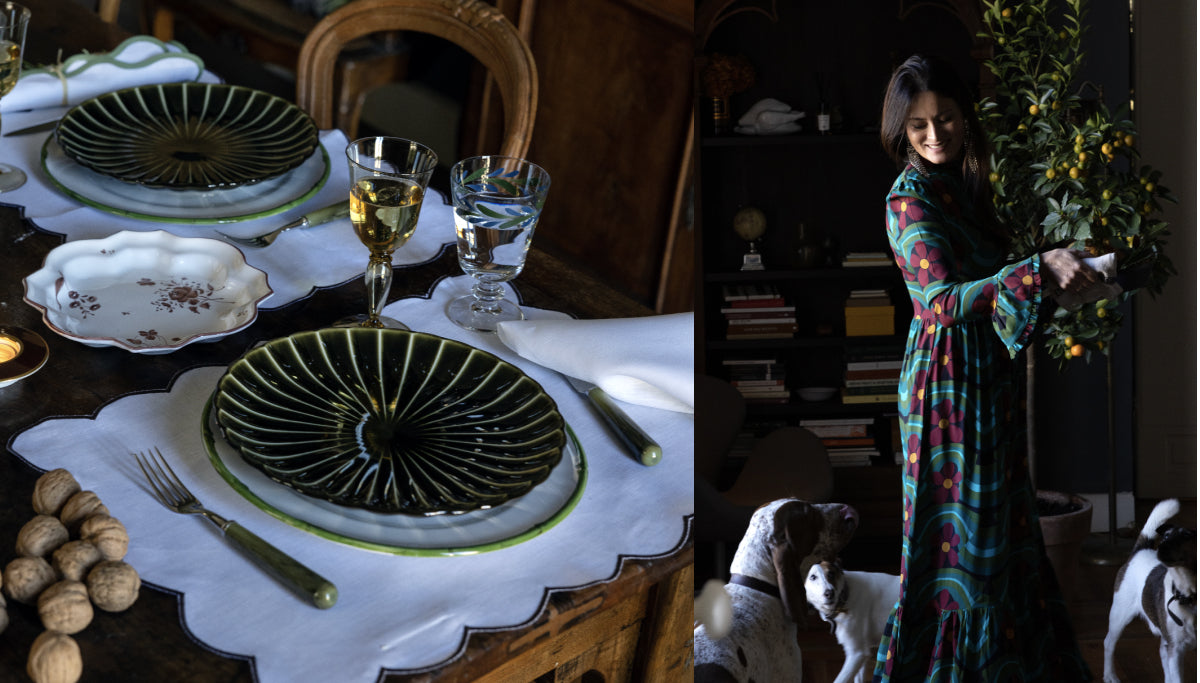
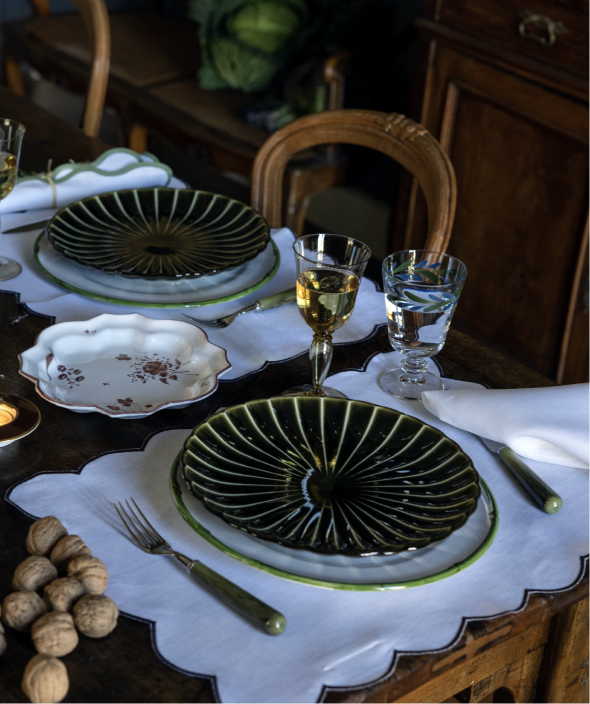
December 8 is the official date for Italy, so we stick to the tradition—any earlier, and things get crispy. We like to have a really giant, fresh Christmas tree, the type of thing that you almost need a crane to get it into the house. The decorations are a mix of whatever we’ve picked up on our travels. Then we have wreaths, little bouquets of mistletoe everywhere, and olive branches instead of holly. I prefer greenery at Christmas rather than red. Poinsettias freak me out—they look like monsters.
It’s quite a leisurely start, unless you’ve lost the toin coss to wait in line for the traditional nuvola pandoro from Pasticceria Ghigo. ‘Nuvola’ means cloud, and it comprises a golden pandoro dome of cake covered with white vanilla-sugar-butter frosting. It’s so pretty and delicious, it’s worth coming to Turin in the winter just to have a slice. You can’t preorder it—believe me, I’ve tried to charm the baker—so on Christmas morning everyone starts queuing from six in the morning. It’s a big victory when you come home with one or two.
Discovering some incredible Italian artisans since moving has really influenced my taste, and I’ve also developed a taste for Murano glassware while hosting cookery schools in Venice. The Italians like to mix colors with flair, so that things don’t look too classic. I love ranunculus, so if we’re lucky enough to have them, I will put them in little Murano glasses along the table with silver pots of winter tulips. Green is a favourite color, so I will be using Angela Wickstead’s green-trimmed scalloped napkins for the table, with marble-resin, green-yellow cutlery from Alain Saint-Joanis, and amber-tinted glasses from Yali.
As for tableware, I think touches of humor are important, like the monkeys on the Laboratori Paravicini plates that I’ll be setting out in between ZdG’s beautiful traditional faience side plates. Not forgetting the Taf Firenze embroidered cocktail napkins for aperitivo hour—they’re naughty but nice!
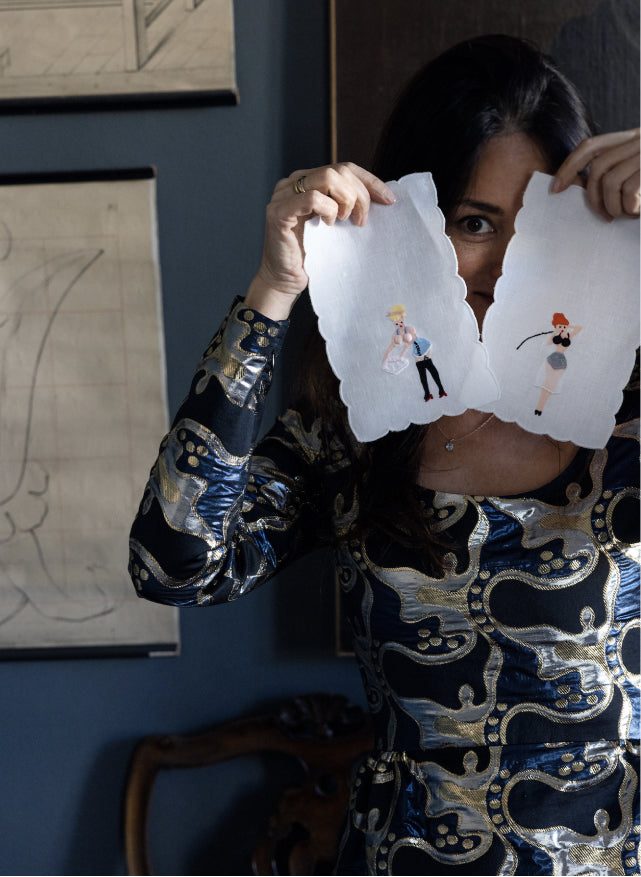
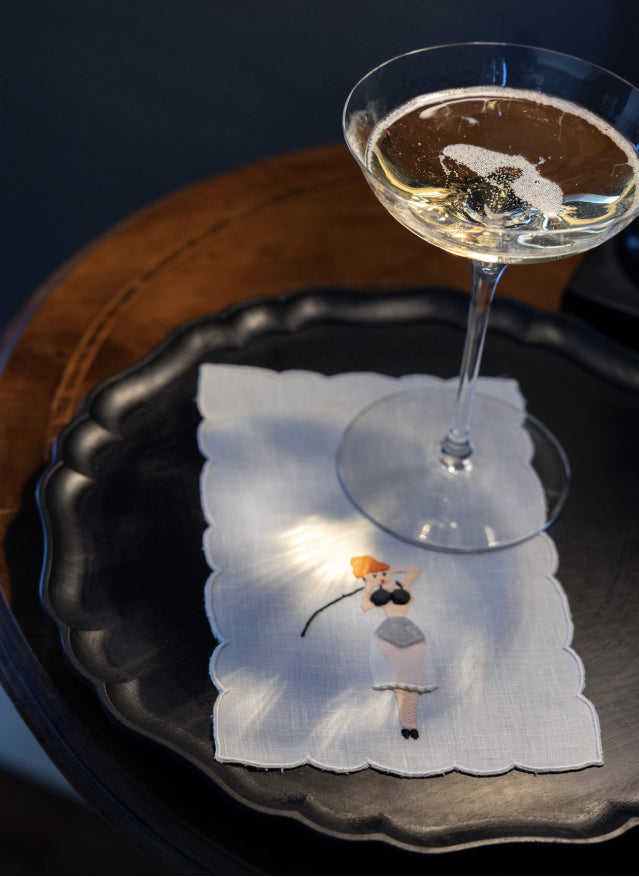
I like to start the day with Buck’s Fizz—retro but fun! We have that with brunch, which is scrambled eggs, smoked salmon and truffle with toast. Then, later on, we’ll have an aperitivo with Drappier Brut Nature Champagne—I love that it was Charles de Gaulle’s favorite. I serve that with gorgonzola gougères, foie gras with black truffles, and culatello with torta fritta—melt-in-the-mouth ham with a little pillow of heavenly dough that’s been deep-fried. It’s the ultimate.
When we were in the Médoc, it was a bit more drop in and drop out—the homemade mince pies were a big draw for the French! But for Christmas in Italy, it’s just family, 16 of us, all in our apartment overlooking a busy piazza in Turin. We were very lucky to find a big apartment with high ceilings and frescoes, parquet and marble floors, a large terrace and charming neighbors. Turin is really old school, and the most French of Italian cities, so I really feel we’ve got the best of both worlds.
